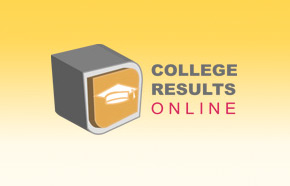State offers $1 million in aid to low-income students
State offers $1 million in aid to low-income students
By:Philip Haldiman, Dec 3, 2008
(see J.D.'s comments at the end of this article.)
Low-income college and university students just received another financial-aid opportunity from the state.
Gov. Janet Napolitano announced Tuesday that $1 million in new financial-aid funding from the U.S. Department of Education will be available to continuing students who demonstrate financial need, said Shilo Mitchell, a spokeswoman for the governor.
“It’s another option for students who want to pursue higher education,” Mitchell said. “It could ensure that students who may not have the opportunity get that opportunity.”
Students must have completed at least one year of higher education and meet other eligibility requirements to apply.
Applicants could receive up to a $2,000 grant per year for two years. Students may apply for grants from the Arizona College Access Aid Program online at azgrants.gov.
“A good education — and higher education in particular — will be necessary to compete in Arizona’s 21st century economy,” Napolitano said in a press release. “In these tough economic times, this grant will open the door for Arizona students to continue pursuing college degrees, who may not have been able to otherwise.”
ASU’s financial-aid office did not provide comment on the grant program by press time.
The grants to low-income students are funded by a $2.7 million award the state of Arizona received through the U.S. Department of Education’s College Access Challenge Grant, which helps low-income students prepare for and attend college.
The $1.7 million that’s not distributed directly to students will be used to provide competitive grants to college access programs. These programs help low-income students and families prepare for higher education, Mitchell said.
The purpose of the federal grant program is to foster partnerships among federal, state, and local governments and philanthropic organizations through matching challenge grants that are aimed at increasing the number of low-income students who are prepared to enter and succeed in postsecondary education.
J.D.’s comments:
Okay that is all well and good for underprivileged families. But what about the backbone of America? The middleclass family, those that make $40,000 to $180,000.
I am all for helping those in need. The reality of it is middleclass families need help to.
The key (here I am on my soapbox again) is research and positioning. Did you know that there are colleges out there that would love to see your B average student and are willing to throw money at them? Even affluent families have captured these dollars.
Parents have been drilled in the head “you make to much to qualify for aid.” In the words of Mr. Ebenezer Scrooge "Baa-humbug! "
Finding the right schools or coined “best fit” college is paramount.
What is best fit you say? Well, best fit is demographics. No, I am not talking about ethnicity or male-female ratios. It’s where does your student fall in the GPA and standardized test score demographics, top third, middle third or bottom third.
Some professionals say that your student should apply to 3 types of colleges. Safety schools, good match schools and reach schools.
I disagree. Here’s why. Sure you can apply to your reach schools and your student may get it. However, your student may be at the bottom of the grade scale and will most likely not be offered much or nothing at all in the form of scholarships or grants, because this type of student is not highly desirable by that particular institution.
Your student may want to apply to 1 or 2 (leaning more towards 1) reach school and the bulk of the other schools in good match with 2 safety schools to fall back on.
AZ College Planning recommends applying to 8 colleges, 1 reach (maybe) 5 good fit schools, and 2-3 safety colleges.
Also research what schools have money to give out.
Affluent or middleclass, you can position your student to be a highly desirable college candidate with a bit of research.





